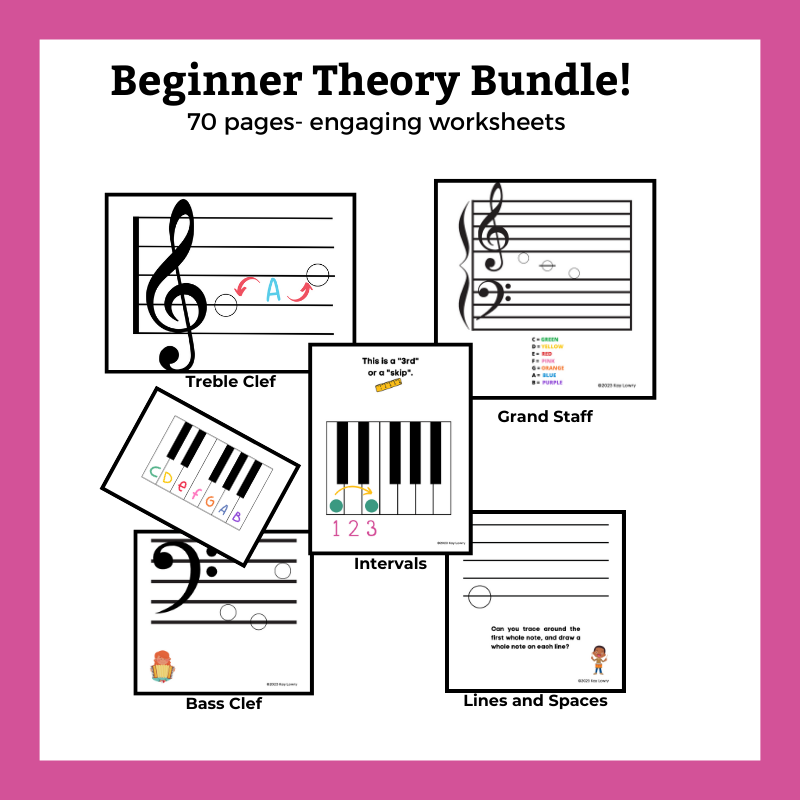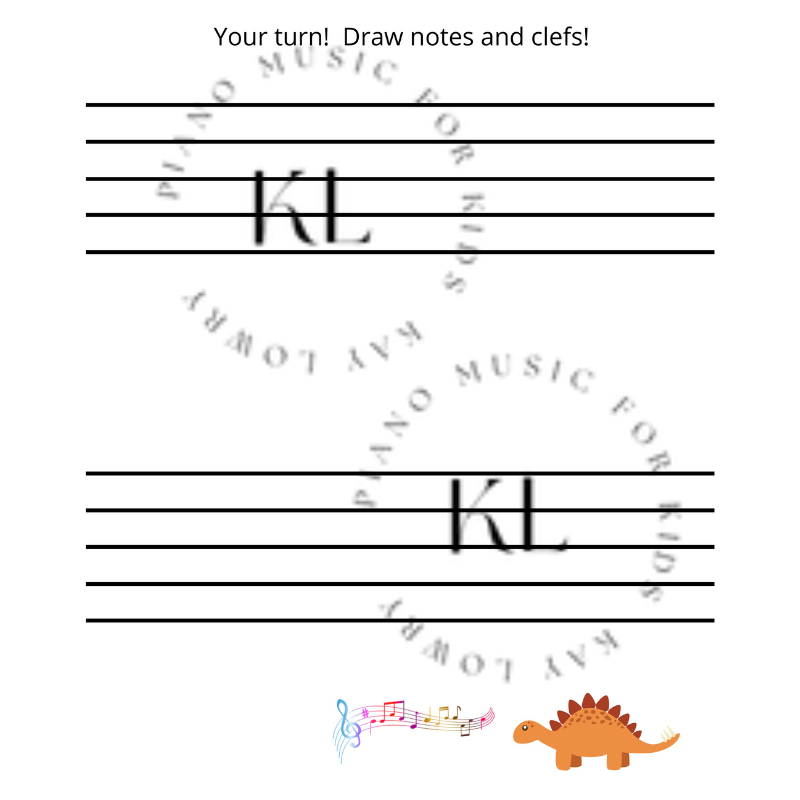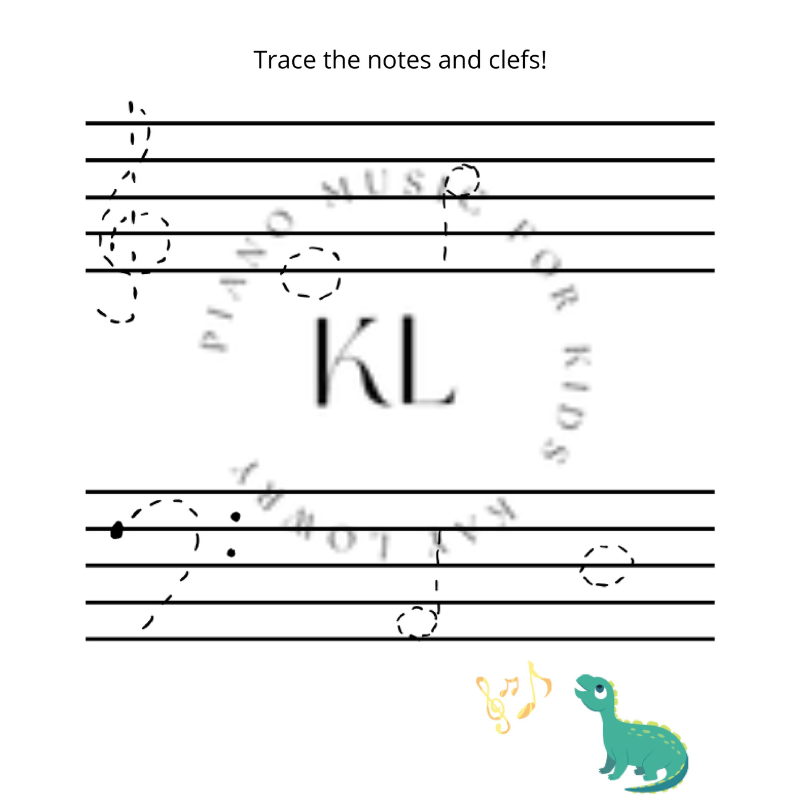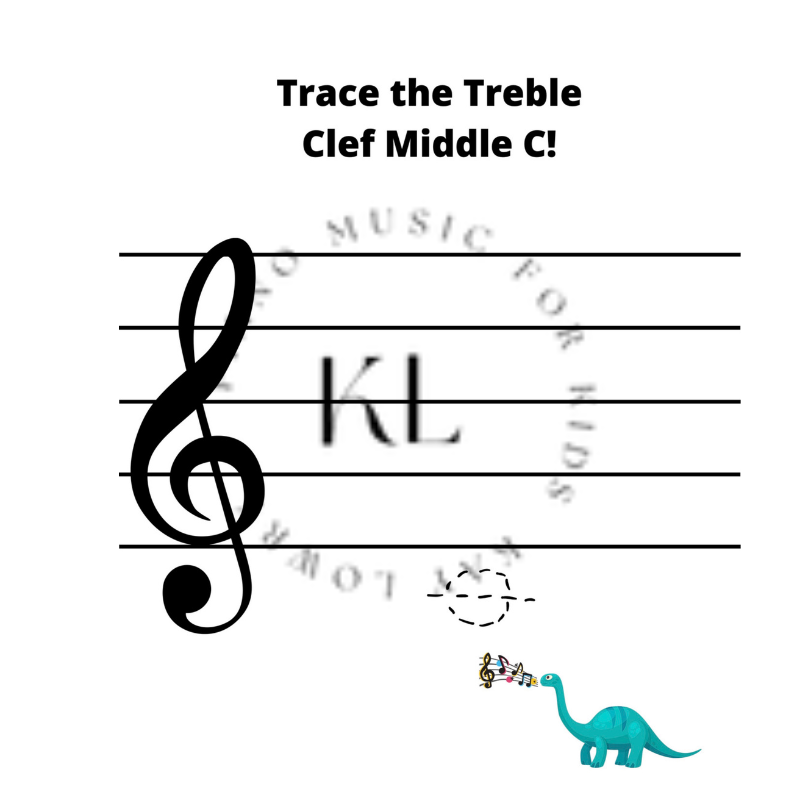Explore Rhythm! A studio-licensed activity book for children
Who’s it for: Young children ages 4-7. Preschool and elementary kids who want to learn more about rhythm and note values.
What’s inside: a unique approach to note values, allowing kids plenty of space to write, draw, and create.
Challenges: none. This workbook is accessible to all.
Many teachers have grabbed on to this easy, peasy set of worksheets that kids really enjoy!
Why allow a whole piece of paper for a whole note? Because to kids who are cognitively developing in a concrete mindset - a whole note takes up the WHOLE page. Then, as we move through dividing the page, even kids who don’t understand fractions can grasp how the note values relate to one another.
You become the teacher who FINALLY explains rhythm to children, and they get it!
Get your copy today - and stop explaining over and over how many counts notes get. Let them discover and experience rhythm through “Exploring Rhythm”!
Who’s it for: Young children ages 4-7. Preschool and elementary kids who want to learn more about rhythm and note values.
What’s inside: a unique approach to note values, allowing kids plenty of space to write, draw, and create.
Challenges: none. This workbook is accessible to all.
Many teachers have grabbed on to this easy, peasy set of worksheets that kids really enjoy!
Why allow a whole piece of paper for a whole note? Because to kids who are cognitively developing in a concrete mindset - a whole note takes up the WHOLE page. Then, as we move through dividing the page, even kids who don’t understand fractions can grasp how the note values relate to one another.
You become the teacher who FINALLY explains rhythm to children, and they get it!
Get your copy today - and stop explaining over and over how many counts notes get. Let them discover and experience rhythm through “Exploring Rhythm”!

Who’s it for: Young children ages 4-7. Preschool and elementary kids who want to learn more about rhythm and note values.
What’s inside: a unique approach to note values, allowing kids plenty of space to write, draw, and create.
Challenges: none. This workbook is accessible to all.
Many teachers have grabbed on to this easy, peasy set of worksheets that kids really enjoy!
Why allow a whole piece of paper for a whole note? Because to kids who are cognitively developing in a concrete mindset - a whole note takes up the WHOLE page. Then, as we move through dividing the page, even kids who don’t understand fractions can grasp how the note values relate to one another.
You become the teacher who FINALLY explains rhythm to children, and they get it!
Get your copy today - and stop explaining over and over how many counts notes get. Let them discover and experience rhythm through “Exploring Rhythm”!




































